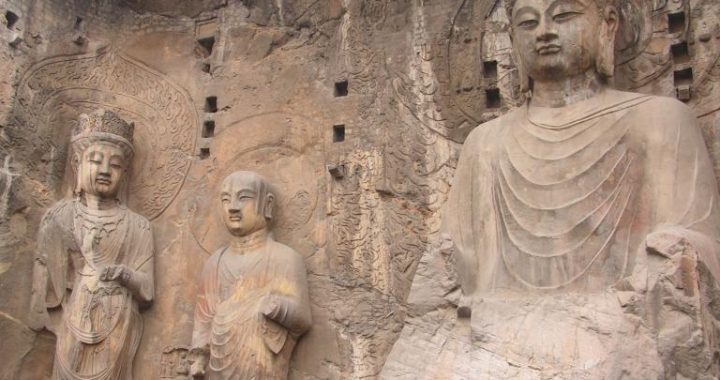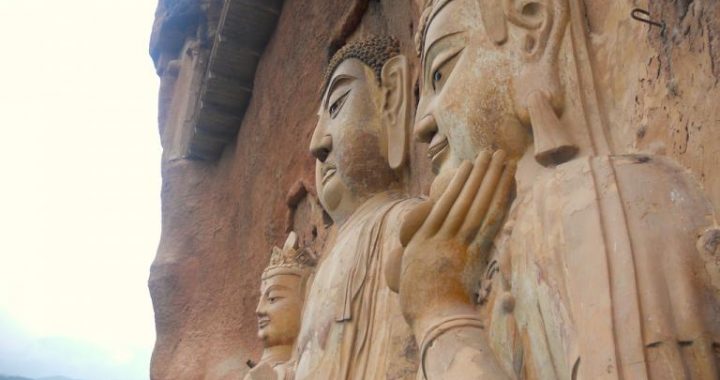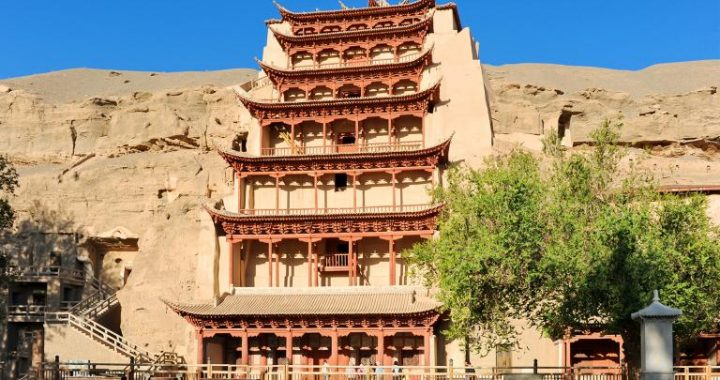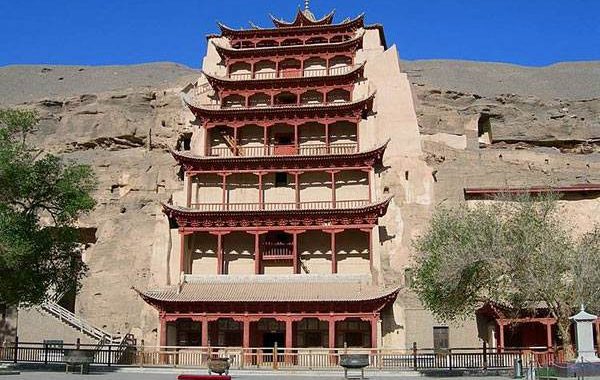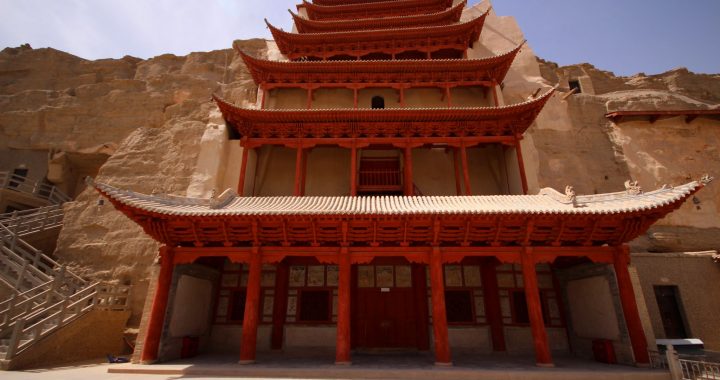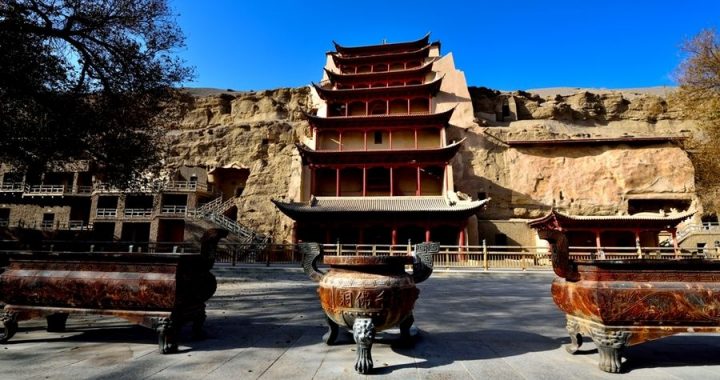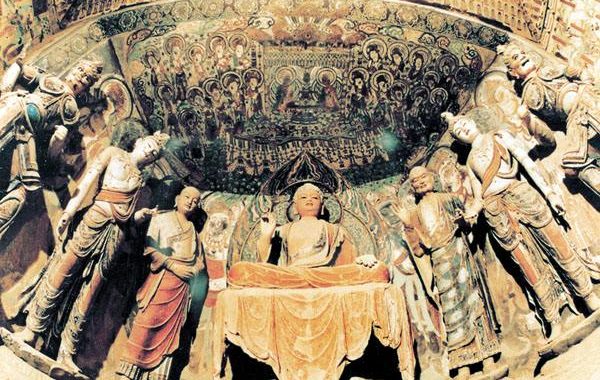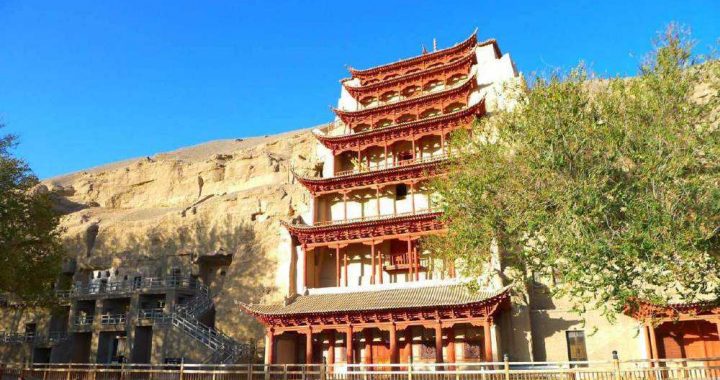Mogao Grotoes in Dunhuang Clity
2 min readMogao Grotoes is situated 25km southeast of Dunhuang city,Gansu province,in Daquan river valley at the foot of Echoing-sand Mountain facing Sanwei Mountain.On the cliff face over 1 600m long from south to north 492 caves survived the time,various in size and clustered higher or lower allover the cliff.In the caves are vivid statues,elegant apsaras,amazing mu-rals,and exquisitely arranged lotus bricks,creating a holy world of Bud-dhism.
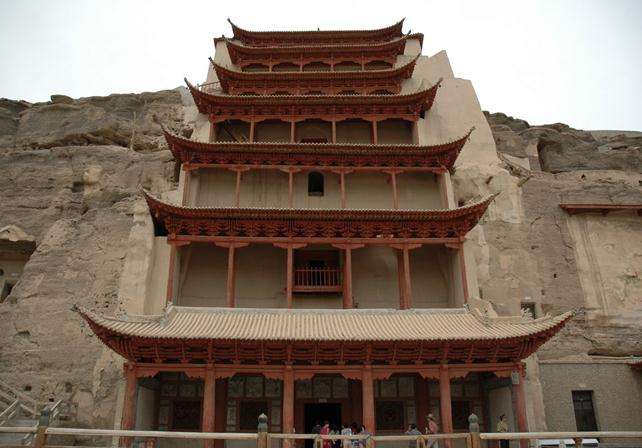
The first Mogao grottoes were carved in 366,and the carving went on through the following dynasties of North Liang,North Wei,West Wei,North Zhou,Sui,Tang,Five Dynasties,Song,West Xia,and Yuan.There remain by now over 45 000m2 murals and more than 2 400 statues,the tallest statue exceeding 30m and the largest mural covering about 50m2.These statues and murals constitute a mirror of China in the thousand years from the 4th to the 14th century,reflecting the society,production,life,transportation,ar-chitecture,art,music,dance,customs,and religion of the people.
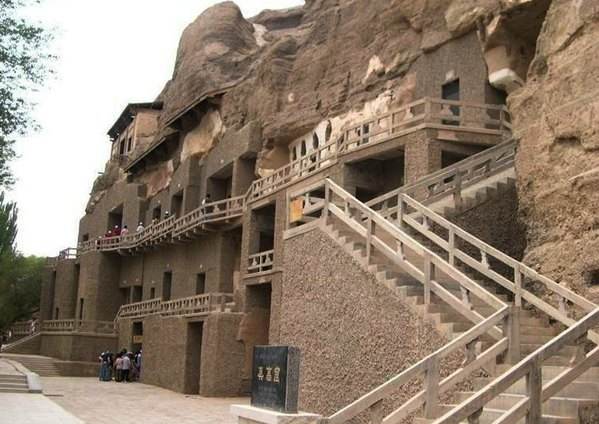
The artistic content of the grotoes is exceedingly rich as an integrated art of architecture,sculpture and fresco,reflecting not only the acceptance of Buddhism in Dunhuang area,but also the history and society as well as economy of the area,and providing a vivid illustration of the localization of Buddhism in China and the capacity of Chinese people in their absorbing and remodeling of foreign cultures.
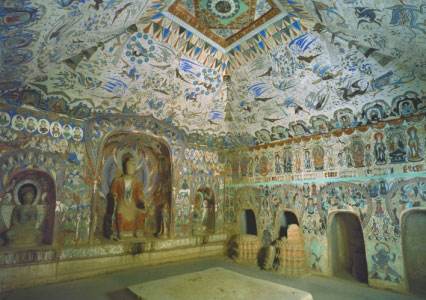
These artistic creations of religion,grand in scale and stunning in num-ber,provide the valuable data for the study of the social life,ethnic relation,and cross-culture exchange in ancient China.
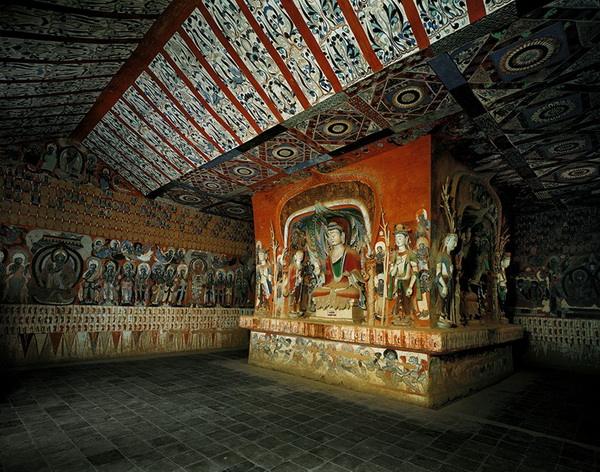
In 1961,Mogao Groftoes was recognized by State Council as a key his-torical site under state protection,and in 1987,UNESCO inscribed it on World Heritage List as a cultural heritage of the world.
